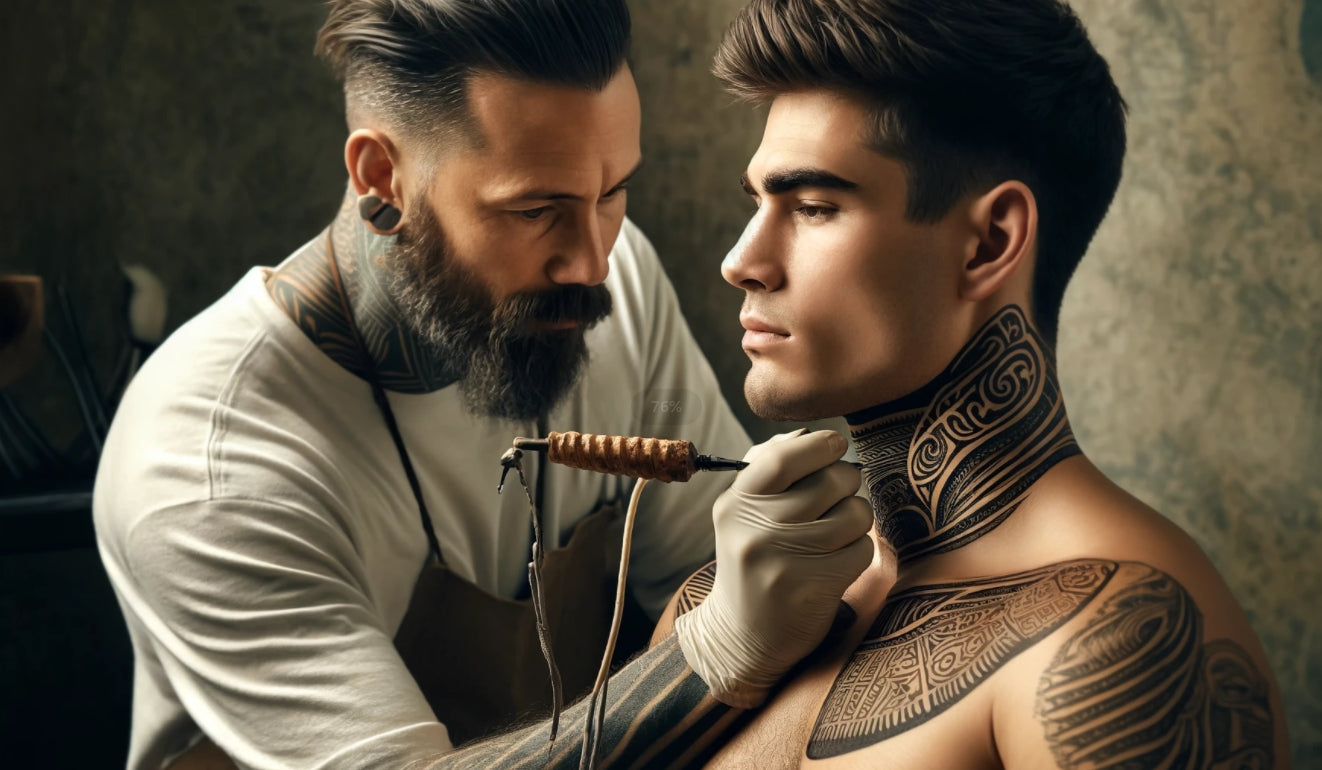TATARTIST Tattoo Knowledge Academy
Explore Maori Culture: History, Tattoos and Traditions
As the native culture of New Zealand, Maori culture is known for its unique traditions and deep historical roots. Today, Dr. TATARTIST Tattoo Knowledge will tell you about the various cultures and history of the Maori people.
Historical Origins:
The Maori are the indigenous people of New Zealand and are believed to have migrated from the Polynesian region (mainly the present-day Cook Islands) around 1300 AD. Their arrival brought a unique language and traditions, forming the Maori culture we know today.
Language and Mythology:
The Maori language (Te Reo Maori) is at the core of Maori culture and is an expressive language that is closely linked to their myths and legends. These stories not only record the history and beliefs of the Maori people, but also explain many phenomena in nature and the universe.
Social Structure and Organization:
Maori society is traditionally a tribal system, with each tribe (iwi) having its own territory, political structure and social hierarchy. This structure supports a social cohesion based on family and collective interests.
Arts and crafts:
Artistic expressions in Maori culture include wood carving, tattoos (Ta Moko), weaving and traditional dances (such as Haka). These art forms are not only aesthetic expressions, but also important symbols of ethnic identity and personal status.
Connection with nature:
The Maori have a deep reverence and spiritual connection to the land. They believe that they are part of nature and must live in harmony with it. This concept is reflected in their environmental management, food gathering and resource utilization.

Tattoo culture:
The Maori facial tattoo (Moko) is one of the most prominent features of their culture. Each tattoo has its own unique meaning and story, usually representing the individual's family background, social status and achievements.
History of cultural transmission:
Emigration to New Zealand: Using large catamarans and celestial navigation technology, the Maori gradually migrated to New Zealand from the Polynesian region, especially possibly the Cook Islands and the Society Islands. This migration process is called the "Age of Exploration".
Spread in New Zealand:After arriving in New Zealand, the Maori took root and formed multiple tribes (Iwi) throughout the island nation. These tribes are distributed in the North Island and the South Island, each with its own territory, culture and social structure. They have adapted to New Zealand's diverse environment and developed a rich culture and lifestyle.

Maori traditions, language and rituals play a vital role in preserving and passing on Maori cultural heritage:
Cultural importance of traditions:
Maori traditional activities such as carving, weaving and traditional dances (such as the Haka) are not only artistic expressions, but also a way of passing on ethnic identity and history. These traditions are at the core of Maori cultural identity and a bridge for the younger generation to understand and connect with the past.
Cultural importance of language (Te Reo Maori):
Te Reo Maori is not only a tool for communication, but also a carrier of Maori philosophy, cultural values and knowledge. Its use and revitalization is a manifestation of cultural pride and is essential to maintaining the vitality and continuity of culture.

Cultural importance of rituals:
Maori rituals such as the Powhiri and the Haka are not only social activities, but also have deep spiritual significance. Through these rituals, community members can unite to maintain and celebrate their cultural heritage.
Tattoos are indeed an important cultural carrier in Maori culture, called "Ta Moko". This unique body art is not only decorative, it carries deep cultural significance and a symbol of personal identity.
Cultural Icons of Maori Tattoos:
Ta Moko is a symbol of identity for Maori people, and each tattoo has its own unique meaning and purpose. It conveys the wearer's family background, social status, personal history and achievements.
Gender Differences:
In Maori culture, the location and design of Ta Moko for men and women are usually different. Men's tattoos tend to be more extensive and complex, covering large areas of the face and body, while women's tattoos are usually smaller and concentrated on the jaw, lips and lower neck.

Meaning of Tattoo Patterns:
Each Ta Moko pattern has a specific meaning, often related to elements of nature, battles and ancestral stories. For example, spiral patterns often symbolize a new beginning or growth in life; while shark tooth patterns may symbolize protection and strength.
In Maori culture, tattoo (Ta Moko) customs vary significantly between men and women, and these differences are reflected in the design and location of tattoos:
Male Ta Moko:
- Location: Men's tattoos are usually more extensive, including the face, buttocks, thighs and arms.
- Design: Men's tattoos often contain complex geometric patterns and lines, with detailed designs, representing courage, strength and tribal status.
Ta Moko for Women:
- Location: Women’s tattoos are usually placed on the jaw, lips, and neck, and sometimes on the wrists and arms.
- Design: Women’s designs are relatively simple, often including curves and spirals, symbolizing beauty and the noble status of women.

Each tattoo is not only beautiful, but also contains deep cultural meaning, reflecting an individual’s family history, social status, and life experiences. These traditional tattoos emphasize an individual’s role and identity in society and tribe.
Maori culture is not only deeply rooted in the lives of its inheritors, but has also gained increasing recognition and appreciation around the world. This culture showcases a lifestyle in harmony with nature and a rich spiritual heritage, including its traditional art, dance and special tattoo art. The uniqueness and historical depth of Maori culture have attracted the attention of scholars and art lovers from all over the world, making it one of New Zealand's most valuable cultural assets.
Are you interested in Maori culture? You can learn more about Maori culture by visiting museums, attending cultural seminars or using educational resources. This will not only increase your understanding of Maori society, but also support and respect this rich cultural heritage.

TATARTIST tattoo workstation for sale


